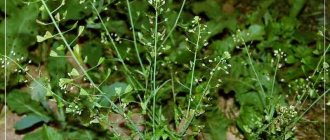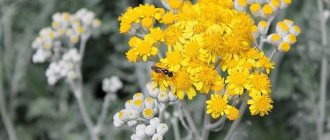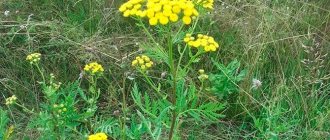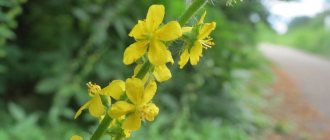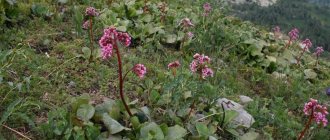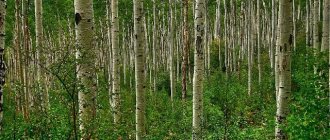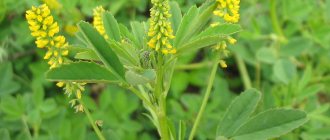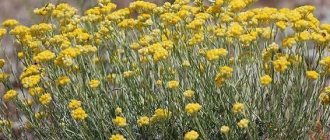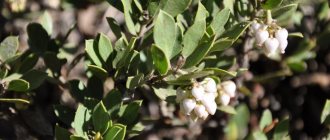Photo: UGC Knotweed is an inconspicuous at first glance, but very tenacious annual plant. The grass knotweed owes its popular name to its rapid and active growth. Reviews about it indicate the variety of medical uses and the undeniable value that knotweed conceals. The benefits and harms, along with the most common methods of use, are described in the article.
Mode of application
Place one tablespoon of cut-pressed herb in an enamel bowl, pour in 200 ml of hot boiled water, close the lid and leave in a boiling water bath for 15 minutes. Cool at room temperature for 45 minutes, strain, and squeeze the remainder into the strained infusion. Bring the volume of infusion to 200 ml with boiled water. Shake the infusion before use. Take warm 2-3 times a day 15-20 minutes before meals:
- adults - ⅓-½ cup;
- children over 14 years old - ¼ cup;
- children 12-14 years old - two tablespoons;
- children 7-12 years old - one tablespoon.
The course of treatment is up to 20-25 days. Repeated courses (no more than 4 times a year) should be carried out after a 10-12 day break.
Botanical description
What is knotweed? Polygonum aviculare - as the annual herbaceous plant is called in Latin - belongs to the genus Knotweed of the buckwheat family. Knotweed can grow up to 80 cm in height. According to the description, Knotweed has:
- thick, tap root;
- stem – up to 60 cm, with pronounced nodes, branched, creeping at the base;
- leaves are elliptical in shape, up to 5 cm long, up to 1.5 cm wide, grayish-green in color, with short petioles, with whitish membranous bells at the nodes.
Experts note that after flowering the stems become stiff. According to the description, the knotweed blooms from May to October. In this case, the following are observed:
- flowers in buds of 2-5 pieces, located in the axils of the leaves, small, have 3 pistils, 8 stamens, color – pink-green;
- the fruits are a flat triangle, black or brown, ripen from July to September, and are very loved by birds.
Where does knotweed grass live?
This plant is distributed throughout Russia, except in places with eternal ice. For knotweed, temperature and humidity do not matter; it is comfortable in any climate. The plant is resistant to trampling, it gravitates towards weedy places, easily tolerates natural disasters, and grows on any soil. Highlander can be found:
- along country roads;
- in the mountains;
- in gardens as a weed;
- in the gardens;
- near rivers;
- on sports grounds;
- at farmsteads;
- on pastures.
What does bird buckwheat look like?
The knotweed grass remains unchanged in color until autumn, forming an elastic carpet. The features of this medicinal plant are noted. Noteworthy:
- a long stem that extends along the ground may rise slightly;
- small flowers with five petals, green with a pink border;
- clusters of buds in the axils of leaves at different phases of blooming;
- oblong, large leaves of pale gray-green color.
Note!
The description of the drug Sporysha grass 100g on this page is a simplified author’s version of the apteka911 website, created on the basis of the instructions for use.
Before purchasing or using the drug, you should consult your doctor and read the manufacturer's original instructions (attached to each package of the drug). Information about the drug is provided for informational purposes only and should not be used as a guide to self-medication. Only a doctor can decide to prescribe the drug, as well as determine the dose and methods of its use.
What is knotweed
A creeping herbaceous plant has elastic stems, it is pleasant to run on it or walk barefoot. Sometimes it has the appearance of a bush and forms dense thickets. Due to the spread of the grass throughout the country, knotweed has many other names. The most famous of them is the popular name knotweed. In addition, there are:
- grass-ant;
- bird rich;
- buckwheat;
- goose house;
- chicken beetle;
- goose grass;
- bird's buckwheat;
- fringed grass;
- gourd;
- bitter;
- stomper;
- renal;
- cooler;
- chelny grass.
Price of knotweed in a pharmacy
If possible, it is recommended to harvest the grass yourself. The medicinal plant knotweed is sold in pharmacies without prescriptions. Can be purchased through online stores that specialize in such products. The price range in rubles for Moscow is:
| Release form | Quantity | Price range, rub. |
| Filter packages | 20 pieces 1.5 g each | 70-124 |
| Package | 50 g | 40-75 |
Chemical composition
The herb contains the following substances:
- flavonoids (luteolin, avicularin, myricetin, hyperin, isorhamnetin, kaempferol, quercetin);
- vitamins K, E, dehydroascorbic and ascorbic acids (up to 0.9% by dry weight), provitamin A (carotene) - up to 40 mg per 100 g;
- silicic acid and soluble acid compounds (4.5%);
- coumarins (umbelliferone, scopoletin);
- acids (gallic, salicylic, acetic, caffeic, valeric, chlorogenic, coumaric, malic, formic);
- anthraquinones;
- resins;
- slime;
- bitterness;
- fats;
- carbohydrates;
- fats;
- tannins (about 0.35%);
- a small proportion of essential oil;
- micro- and macroelements (copper, calcium, iron, vanadium, silicon, magnesium, silver).
Anthocyanins and anthraquinones (emodin and glycosides, chrysophanol) were found in the roots.
Knotweed - beneficial properties and contraindications
Medicinal mixtures prepared from knotweed are widely used in the treatment of numerous ailments. It is necessary to take into account that the herb has a powerful effect on the body, so it is important to know all the contraindications for use. It is advisable to consult a doctor to:
- avoid unpleasant consequences;
- determine the dosage and course of treatment.
The beneficial properties are determined by the composition of the plant. The use of medicinal raw materials in the form of infusions and decoctions helps:
- eliminate foci of fermentation - the composition has antimicrobial properties;
- get rid of allergic rashes, acne;
- in the treatment of ulcers – has an anti-inflammatory effect;
- cleanse the body of excess salts;
- normalize water metabolism;
- remove painful sensations;
- get rid of tired legs;
- protect skin from ultraviolet radiation;
- tissue regeneration after burns.
Chemical composition
The bird's buckwheat plant owes its medicinal properties to the rich composition of its constituent components. This helps to effectively use the plant in traditional medicine recipes. The composition of knotweed contains vitamins E, K, B, C, and also:
- tannins;
- essential oils;
- fiber;
- carbohydrates;
- resins;
- bitterness;
- fats;
- slime;
- silicic acid and its compounds;
- flavonoids – quercetin, avicularin;
- ascorbic acid;
- carotene;
- magnesium;
- silicon;
- phosphorus;
- calcium;
- zinc.
Medicinal properties
Pharmacognosy, a science that studies plants that have medicinal properties, notes the unique characteristics of knotweed. The beneficial substances in the composition have medicinal characteristics. The plant has anti-inflammatory properties and valuable qualities:
- general strengthening;
- wound healing;
- immunostimulating;
- hemostatic;
- astringent;
- diuretic;
- antimicrobial;
- antiputrefactive;
- tonic;
- anthelmintic;
- antipyretic.
The use of bird knotweed is characterized by the following therapeutic effect:
- causes contraction of the uterus;
- accelerates the healing of bruises and wounds;
- reduces vascular permeability;
- accelerates metabolic processes;
- reduces the crystallization of salts in the urinary system;
- increases blood clotting;
- improves appetite;
- removes toxic substances from the body;
- reduces bleeding;
- relieves swelling;
- lowers blood pressure;
- removes small stones from the kidneys.
Contraindications
Before you begin treatment with bird knotweed, you should familiarize yourself with the contraindications for use. This will avoid side effects and health problems. Polygonum preparations are prohibited in the following cases:
- the presence of stones more than 6 mm in the urinary canals;
- ulcers during exacerbation;
- glomerulonephritis;
- exacerbation of diseases of the stomach, bladder, kidneys;
- increased acidity;
- less than 12 years of age;
- bronchitis.
Contraindications for the use of knotweed include the body's sensitivity to the components of the composition, pregnancy, and lactation. It is undesirable to eat garlic and onions while using knotweed. The medicinal plant is prohibited for pathologies associated with the functioning of the heart and blood vessels:
- suffered a heart attack, stroke;
- increased platelet production;
- angina pectoris;
- blood clotting disorders;
- low blood pressure;
- thrombophlebitis;
- varicose veins.
Self-harvesting knotweed
Bird knotweed is stored during flowering. The top 30 cm of shoots need to be mowed or cut off, leaving the lower hard part.
Contaminated areas and pastures are not suitable for harvesting medicinal raw materials. The farther the collection site is from roads and industrial enterprises, the better.
The cut parts of the plants are laid out in a thin layer in a warm, shaded place and dried until brittle, turning over periodically.
Store dried knotweed in fabric bags or jars with a ventilated lid for up to 3 years. Stocks of nondescript ants will come to the rescue in case of illness.
Photo of knotweed grass
Read here! Snake knotweed - description, recipes, use, properties and contraindications for use (105 photos)
Please repost
0
2
Uses of knotweed
A little about the use of knotweed herb. Previously, dyes were made from this plant: various warm colors were produced from the above-ground part, and blue paint was produced from the underground part.
Ant is excellent for livestock feed; birds especially love it, which is reflected in some variations of the name.
In the cuisines of many nations, young shoots are added to various hot dishes, salads and baked goods.Greens are added to soups at the end of cooking so that the knotweed herb retains its beneficial properties.
